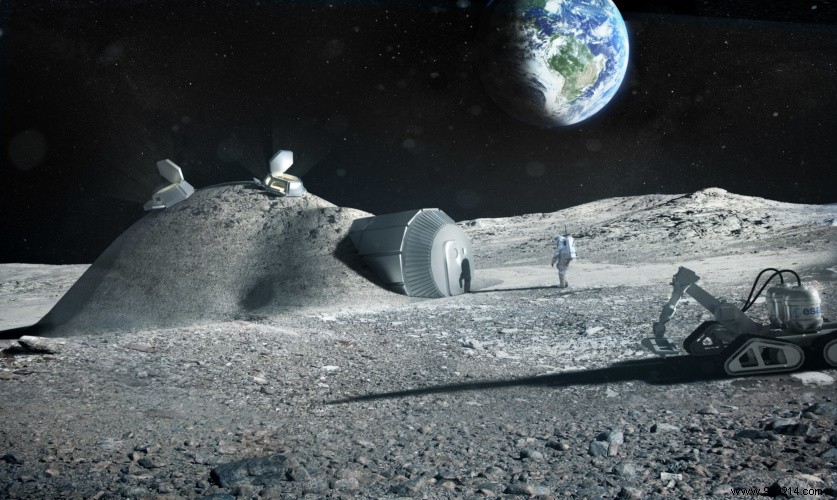This is not a scoop:the Moon is coveted by different states and societies for the exploitation of its resources. What about the risks of conflict? For a researcher, these risks are very real and the situation could degenerate quite quickly in the absence of common rules.
At the end of October 2020, NASA and the company Intuitive Machines declared that they wanted to send an ice extractor to the south pole of the Moon in 2022. This mission is part of the Artemis program of the US agency, whose goal is to send astronauts to the star in 2024 and establish a permanent base there. Water is not the only resource present on the Moon. Indeed, certain strategic locations (skylights) offer significant exposure to the Sun and could allow the installation of photovoltaic parks.
In an article published by The Conversation on December 9, 2020, philosopher Tony Milligan of King's College London recalls that shadowed craters – where water ice is found – as well that skylights are rare, concentrating in the polar regions from the moon. Thus, the various Space actors could fight over these regions, paving the way for future conflicts.
China aiming for the South Pole as early as 2024 has already sent Chang'e 5 to take samples . Russia is targeting the same area, with landings at Boguslavsky Crater (2021) and Aitken Basin (2023). In 2019, India had tried a more direct route but the Chandrayaan-2 probe crashed.

In addition to water and skylights, regolith (Moondust) is also a source of covetousness. The European Space Agency (ESA) and the company Metalysis want to develop technology to extract oxygen directly from regolith. Earlier, the ESA discussed the possibility of using regolith to 3D print buildings to build a lunar base.
However, regolith is found everywhere and in abundance on the Moon, which is not the case for some lunar minerals such as thorium and uranium . Essential for producing nuclear energy, these two minerals are found in 34 areas less than 80 km wide. As for iron from asteroid impacts , this one concerns about twenty zones whose width is from 30 to 300 km. Let us also mention helium 3, coveted for its possibilities in nuclear fusion. The latter is found in only 8 areas less than 50 km wide.
As Tony Milligan reminds us, the 1967 space treaty makes no provision for private actors. The 1979 Moon Agreement is considered too restrictive. As for the recent Artemis Accords, everyone feels that these are too favorable to the United States. Tony Milligan thinks that the main space powers will absolutely have to agree on a equitable sharing of lunar resources . There could be talk of a sharing model similar to that of the International Space Station (ISS). Either way, time is running out to make sure you avoid potential future conflicts.